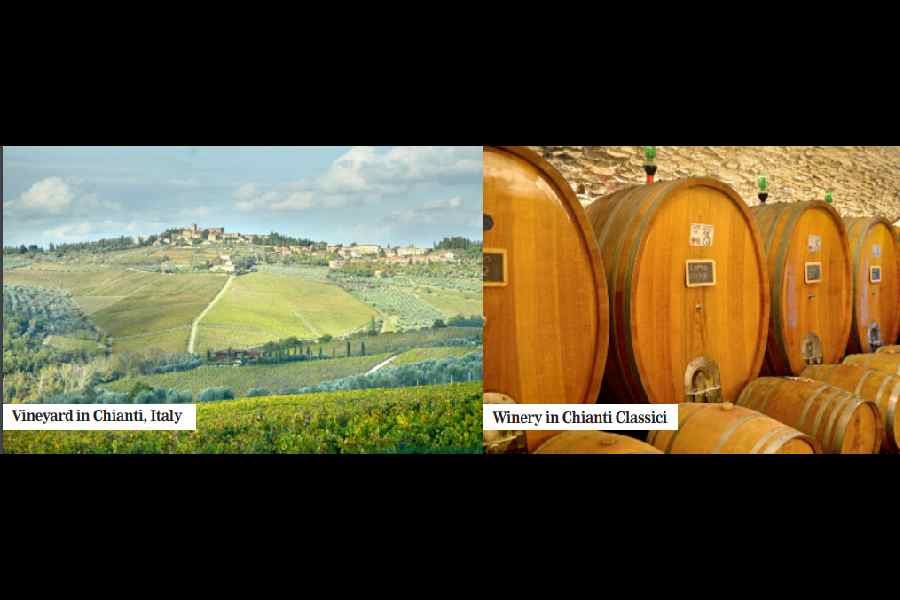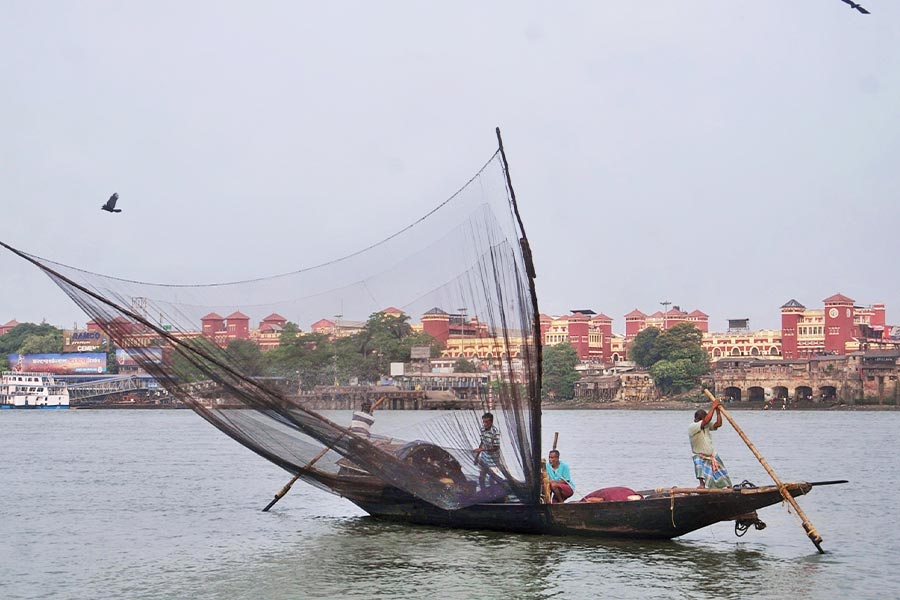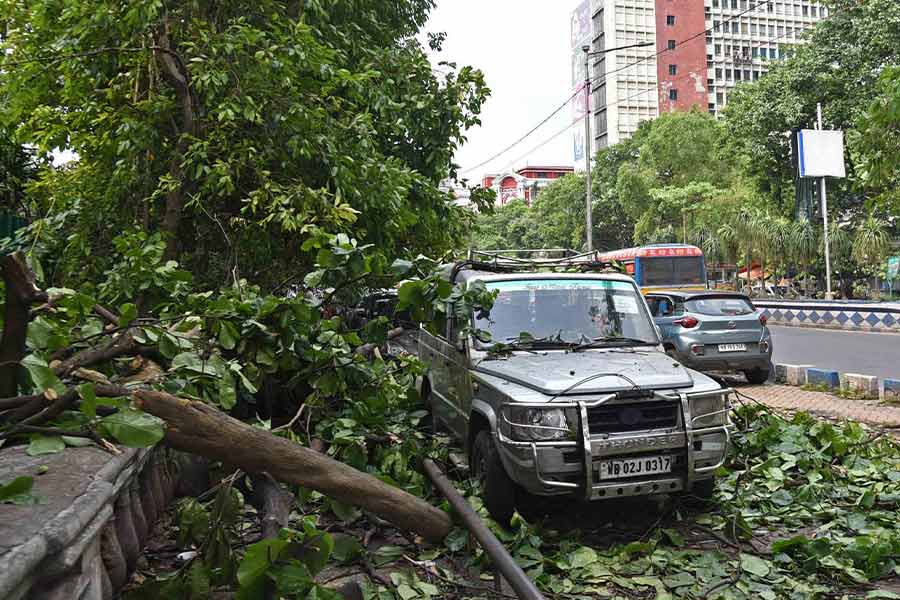Chianti is the ubiquitous wine of Tuscany. Made primarily from Sangiovese grapes, earlier sold in a squat bottle covered in a straw basket called ‘fiasco’, now available in more conventional bottles and popular throughout the world. The Chianti DOCG region is a huge area overlapping other appellations and covering seven sub-regions which can also put their name on the Chianti bottle. However, this article is specific to Chianti Classico, the core central part of Chianti appellation and certainly the most important, apart from being the most well known.
History
History is a little obscure on the earliest mention of Chianti as a wine but in 1716, Cosimo III of Medici, Duke of Tuscany, passed a legislation stating the villages of Gaiole, Greve, Radda and Castellina as the official villages for producing Chianti. It remained that way until 1932 when the entire region of Chianti was mapped and redrawn. However, it was in the later half of the 19th century that Baron Bettino Ricasoli formulated the recipe for Chianti with Sangiovese as the dominant grape in the blend. It has remained the same ever since. History must remember Baron Ricasoli for creating such a wonderful wine from Sangiovese grapes. His family continues to produce Chianti in the family estate at Castello di Brolio.

Territory
The Chianti Classico subzone lies between Florence in the north and Siena to the south. The original four communes of Castellina in Chianti, Giaole in Chianti, Greve in Chianti and Radda in Chianti as legislated by Cosimo III de Medici form the heart of the Chianti Classico zone. To these were added parts of Barberino Val d’Elsa, San Casciano in Val di Pesa and Tavarnelle in the province of Florence as well as Castelnuovo Berardenga and Poggibonsi in the province of Siena when the entire Chianti map was redrawn in 1932.
Out of a total 9,800 hectares of vineyards, 6,800 are exclusively for the production of Chianti Classico. This is a hilly, rocky terrain with rolling hills and undulating roads lined with cypress, olive groves in abundance, dotted with small towns and villages with plenty of agriturismo, wine farms and B&Bs for the weary traveller. Not to forget the number of osterias, and ristorantes serving local cuisines. Monte San Michele is the highest peak in the region at 893m asl but the average elevation ranges from about 250m to about 500m.
Being such a large area leads to differing microclimates and soil types. A wine from the northern part of the region near Val di Pesa could be completely different from one hailing from Gaiole in the south. The various soils found in the region can be broadly classified into two types, sandstones called alberese and chalky marlstones called galestro. The soil of the northern part of the region is more fertile than that of the south.
Production
The production of Chianti Classico is under the strict supervision of the Consorzio Vino Chianti Classico with their emblem of a black rooster called Gallo Nero. Baron Ricasoli’s original formula for Chianti may have undergone modification over the years but Chianti Classico today is as good as it has ever been. Originally prescribed as 70 per cent Sangiovese with 20 per cent Canaiolo and 10 per cent Malvasia Bianca, all Italian varieties, producers in the 60s and 70s felt that the rules pertaining to Chianti wine production were archaic and needed change. Many called for the addition of international varieties in the blend and so moved away from making Chianti Classico. This led to the new wave of wines called Super Tuscans. However, the Consorzio were quick to adapt and brought about changes in the blend, resulting in huge improvement in quality in the last 30-odd years, perhaps more than any other wine in Italy. Today’s Chianti Classico requires a minimum of 80 per cent Sangiovese in the blend; it is possible to make a Chianti with 100 per cent Sangiovese, the rest can be a combination of both international and Italian red grapes.
Chianti Classico falls into three quality categories. At the bottom of the pyramid lies Chianti Classico, which constitutes about 60 per cent of the total production with a minimum ageing period of 12 months. Above it is Chianti Classico Riserva, making up 35 per cent of the production. This wine requires 24 months of ageing with a minimum of three months in bottle. This is by far the best expression of Chianti Classico. At the top of the pyramid is a new entrant introduced recently and only making up 5 per cent of the production. It is called Gran Selezione, literally meaning great selection. It is the top Chianti made by a producer. Aged for a minimum of 30 months, all Gran Selezione wine must be estate grown. Needless to say, it is expensive.
The annual production of Chianti Classico alone is close to 37 million bottles in a good vintage year.
The Wine
Chianti Classico is a medium-bodied wine with good acidity and firm tannins, though, at times the tannins can be dry and gripping but with the high acidity of the Sangiovese it blends well. These are the most sought-after wine of all the sub-regions. Young Chianti Classico are juicy with floral aromas and a sour cherry-like flavour. As they age they tend to take on more earthy flavours like tobacco and leather. Because of its flexibility in blending grapes, and different soil types over a large area, many critics have attributed Chianti as similar to Bordeaux, even though structurally it is completely different.
Basic Chianti is best drunk within five years of vintage. Chianti Classico will be at its peak between eight to 10 years, and Riserva, being richer and fuller, will last anything between 10 to 20 years or longer if stored properly.
Chianti Classico and food
Due to its high acidity, Chianti Classico goes very well with tomato-based pasta dishes. Basic Chianti is an excellent choice to go with your pizza; it is my go-to wine for pizza when I’m travelling in Tuscany. Aged Chianti Classico goes very well with red meat and game such as wild boar and deer, best match being Bistecca Fiorentina with Chianti Classico Riserva. It also pairs extremely well with mature cheese. For Indian cuisine it goes very well with makhani, both chicken and paneer, as well as with mutton dishes with onion-tomato gravy. Some kebabs do well, not all. Try pakoras with basic Chianti.
Producers
With such a vast area and hundreds of producers, including bottlers and wine brokers, quality is variable and inconsistent. Choosing the right one could be tricky, so here is a list of producers who are always on top of their game. The list is not exhaustive but they do give an indication of some of the better producers of Chianti Classico. They could be different in style but they all produce an excellent Chianti Classico, and you will never be disappointed.
Castello di Ama, Antinori, Badia a Coltibuono, Castello di Brolio, Casaloste, Casa Sola, Castellare, Castell’ in Villa, Felsina, Fontodi, I Fabbri, Il Molino de Grace, Isole e Olena, Castello de Meleto, Monsanto, Monteraponi, Querciabella, Rocca di Montegrossi, San Felice, San Giusto a Rentennano, Verrazzano, Vicchiomaggio, Villa La Rose, and Castello di Volpaia.
Chianti in India
There are far more Chianti available than any other red wine from Italy, alas very few are true Chianti Classico. The better producers have shied away from the Indian market citing the obvious reasons, like high taxes, difficult market. However, some ambitious producers as well as some innovative importers are looking at Chianti Classico as a fine example of great Italian wine for your table. Great news for all of us. So next time you drink your Chianti, check out the origin and pedigree of the wine you’re drinking.
The author is an independent wine and hospitality consultant






